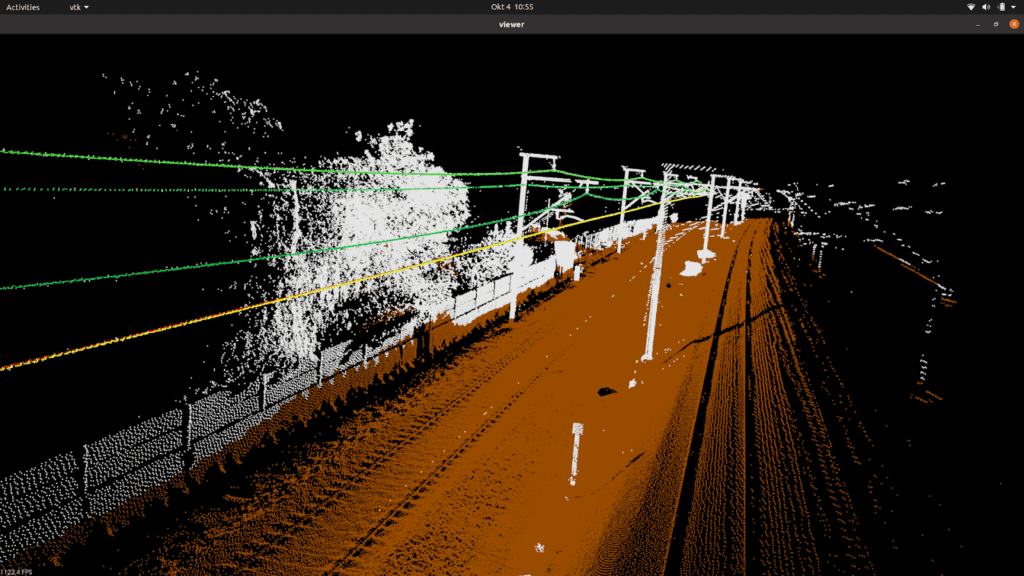CopernNet : Point Cloud Segmentation using ActiveSampling Transformers
In the dynamic field of railway maintenance, accurate data is critical. From ensuring the health of ...
Published on: October 28, 2021
Machine vision systems use cameras to inspect objects or to automate other perception tasks. But that doesn’t mean they use standard, visible-light cameras. In fact, many other sensor technologies are available today that can complete or enhance the capabilities of conventional cameras. In this article, we’ll discuss three of them you should definitely know about.
Radar technology uses radio waves to detect and identify objects at a great distance. You can find radars in many industry applications, including air traffic control and remote sensing. The same working principle applies to LIDAR (Light Detection and Ranges), although this technology uses light pulses instead of radio waves.
LIDAR sensors have a transmitter and a receiver. The transmitter emits a light pulse. This pulse meets an object which reflects the light back to the receiver. By measuring the time needed for the reflected light to return to the receiver, LIDAR can determine the distance to the object, but also its speed and other motion characteristics. This information can be mapped into a 3D representation, a point cloud image.

Advantages of LIDAR:
Disadvantages of LIDAR:
Kapernikov has helped Infrabel, the Belgian railway network operator, with various point cloud machine vision projects. Our solutions enable Infrabel to monitor the condition of its infrastructure (e.g. cables, rails) and the vegetation overgrowth. Compared to manual inspection, the use of LIDAR is much cheaper, much more precise and directly integrated into Infrabel’s pipelines. This software-based approach has also helped Infrabel to scale back its number of dedicated tools.
Hyperspectral imaging combines information from different parts of the electromagnetic spectrum. Our eyes can only perceive visible light, which constitutes a part of that spectrum. When light enters the eye, it falls onto the retina, a membrane at the back of the eye, which consists of three types of light-sensitive cells. A conventional camera image is also generated by 3 signals (red, green and blue) that closely replicate those in the retina. By combining red, green and blue light, the camera can reproduce a broad array of colors.
But the electromagnetic spectrum is much broader than just visible light. Other parts of the spectrum also provide valuable information. For example, a short-wavelength X-ray has the ability to pass through matter and provide a visual image of the interior of a structure. Another example is long-wavelength infrared radiation, which can be used for thermal sensing or night vision.
In machine vision, we can combine information from different parts of the spectrum to expand the capabilities of a conventional camera. To do this, we need to add channels on top of the RGB signals. The width and number of channels can vary significantly, ranging from a few (multispectral) to hundreds (hyperspectral) or even thousands (ultraspectral) of channels in a wide range of wavelengths spanning from thermal infrared to ultraviolet.
Advantages of hyperspectral imaging:
Disadvantages of hyperspectral imaging:
Hyperspectral imaging has many applications, including:
Historically, machine vision and Artificial Intelligence (AI) are closely related. Convolutional Neural Networks (CNN), a modern AI tool, were inspired by how our brain perceives visual information. The first convolutional network was developed to solve the problem of image recognition for a dataset of handwritten digits. The results were amazing and proved that AI machine vision easily surpassed all other methods that existed at the time.
Today, AI is not limited to image recognition (e.g. Is this the image of a dog?). It is also used for more complex tasks, such as object detection (e.g. Is there any dog in the image and where is it?) and instance segmentation (e.g. Is there a dog in the image and which pixels correspond to the dog?). AI can use input from any machine vision system, be it LIDAR, conventional cameras or hyperspectral cameras. The role of the human machine vision developer is to collect and prepare input data, choose a model architecture that is suitable for a specific task, and train the model to optimize its performance.
Advantages of AI machine vision:
Disadvantages of AI machine vision:
Kapernikov’s work for Optimum Sorting is a fine example of AI machine vision. Kapernikov developed state-of-the-art machine learning algorithms to help Optimum manage the food sorting process in its optical sorting machines. Thanks to these algorithms, learning to detect/recognize new products is much faster and more intuitive, and it’s easy to make online adjustments to the sorting program.
The algorithm identifies dangerous foreign objects that got into the machine during harvesting, such as stones, metal or glass. Secondly, it monitors product quality, dividing vegetables into good and damaged ones. The results are impressive: both tasks are performed in real time at the speed of the production run and they are smoothly integrated into the production pipeline.
In sum, machine vision is a powerful technology that is capable of solving advanced industrial problems. In this article, we have reviewed just three types of machine vision technologies, but of course there are many more. At Kapernikov, we will help you choose the best machine vision technology for your specific problem and we will make sure that it works in a most efficient and robust way.
Subscribe to our newsletter and stay up to date.
